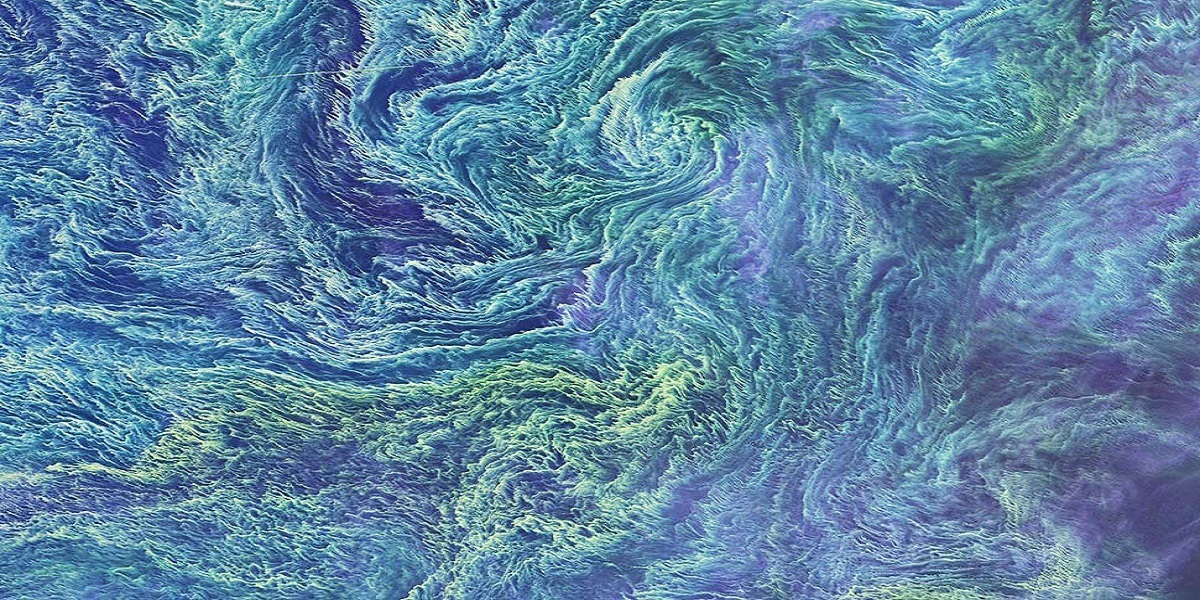
Toxic Algae Blooms Threaten People and Waterways in More Than 20 States

A bloom of toxic algae in the Baltic sea, taken by NASA's Operational Land Imager this month. Photo credit: Norman Kuring, NASA Earth Observatory
More than 20 states have seen occurrences of toxic algae blooms this summer, which have had far-reaching environmental and human health impacts across the country. The algae blooms can also be found around the world, in all climates from Greenland to Oman.
Utah swimmers have been sickened by the toxins, while beaches in Florida have been closed to protect beachgoers. In California, complete ecosystems are under threat due to the toxic blooms, NPR reported.
Some beaches in South Florida have been covered by a toxic algae sludge for months prompting Florida Gov. Rick Scott to declare local states of emergency in St. Lucie, Martin, Palm Beach and Lee counties in June.
'Guacamole-Thick' Algae Takes Over Florida's Atlantic Coast, 4 Counties Declare State of Emergency https://t.co/r3n8BhYXD4 @TheCCoalition
— EcoWatch (@EcoWatch) July 3, 2016
California has reported the blooms in at least 30 lakes and reservoirs, California Water Resources Control Board scientist Bev Anderson told NPR.
“There’s no question that we are seeing more harmful blooms in more places, that they are lasting longer and we’re seeing new species in different areas,” University of Maryland researcher Pat Glibert told the National Geographic earlier this month. “These trends are real.”
A similar trend happened last year, when algae blooms practically covered the West Coast. In summer 2014, an outbreak in Lake Erie forced Toledo, Ohio to cut off city water to almost half a million residents.
The levels of toxins in the toxic blooms are what’s most concerning, Anderson said. Twenty micrograms per liter would cause concern, but these blooms are reporting readings as high as 15,000 micrograms per liter.
Though the quality of drinking water is unlikely to be impacted due to screening in water plants, bathers and boaters can be sickened by the toxins.
One boater in California has noticed the change this summer.
“We’ve been here since 2002,” kayaker Dave Holmes said. “It is by far the worst we’ve ever seen.”
Local resident Wade Hensley had to be hospitalized because of the toxins, after his body became numb from the waist down after he dove into Discovery Bay in the middle of July. He still hasn’t recovered feeling in half his body.
“It was about three days of swimming,” he said. “Not constant, but in and out. And they can’t pinpoint exactly what it is,” Hensley said.
The increase in algae and the change in its composition is likely due to warming temperatures, Anderson said.
“We’re getting higher temperatures than we’ve seen ever in the past,” she said. “California had an unprecedented drought for the last five years which [has left] the water levels very low in a lot of areas.”
Toxins are unusual in algae blooms, she noted.
“Some areas have been monitoring and seeing blooms for decades, but they’ve never had toxins,” she said.
Blooms are also appearing in places that are unusual, including streams and mountain lakes.
Scientists are grappling with how to understand the impact of the blooms on local ecospheres.
“What emerged from last year’s event is just how little we know about what these things can do,” University of California-Santa Cruz toxic algae expert Raphael Kudela said.
Solutions for the Toxic Algae Crisis in Florida and Beyond – EcoWatch https://t.co/mfhnrVUnLm @FoEAustralia @globalactplan
— EcoWatch (@EcoWatch) August 5, 2016
Algae can have a variety of effects on nearby organisms, National Geographic noted. Some algae can alter the color of the waters around it and cause local air to be dangerous for humans to inhale. Other algae forms can cause fish and shellfish to die, and with them the humans that consume these fish and shellfish.
Other blooms can be so large that they deplete the local area of oxygen and force the death of other organisms.
“We expect to see conditions that are conducive for harmful algal blooms to happen more and more often,” University of Maine’s Mark Wells said. “We’ve got some pretty good ideas about what will happen, but there will be surprises, and those surprises can be quite radical.”
Joaquim Goes, a researcher at Columbia University’s Lamont Doherty Earth Observatory, thinks an increased use of fertilizers and substantial population growth are creating the conditions for these toxic algae blooms. But rapid glacial melt in the Himalayas, and the ensuing changes to monsoon patterns, are also causing problems.
It’s also unclear how long toxic algal blooms have been a problem, especially in sparsely populated regions such as the Arctic, National Oceanic and Atmospheric Administration’s Northwest Fisheries Science Center scientist Kathi Lefebvre said.
“It’s a weird thing,” she said. “We saw domoic acid in every species we looked at, so they are all being exposed to it. It’s pretty clear that if you change temperature, light availability and nutrients, that can absolutely damage an ecosystem. But is it just starting? Is it getting worse? Is it the same as always? I have no idea.”

 233k
233k  41k
41k  Subscribe
Subscribe 